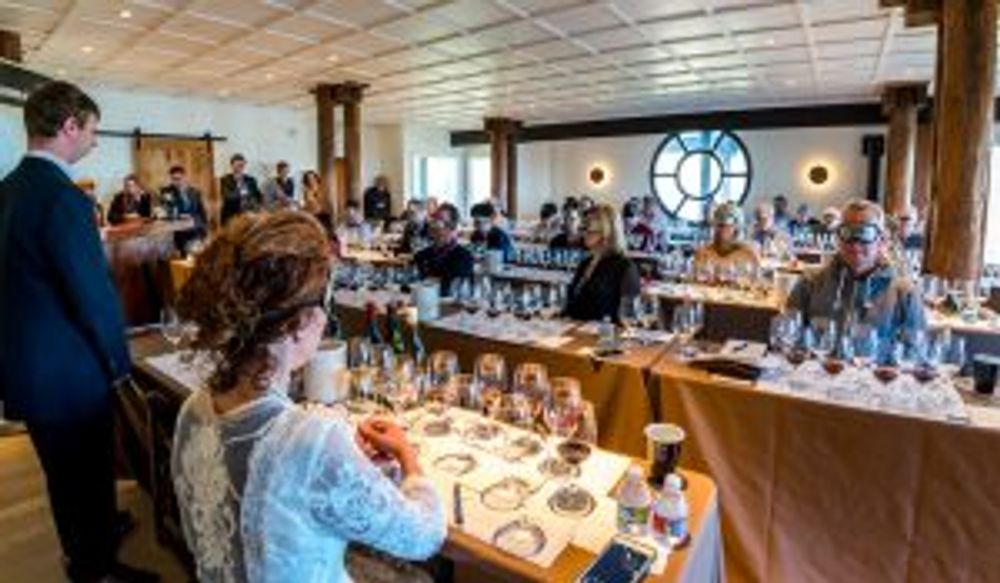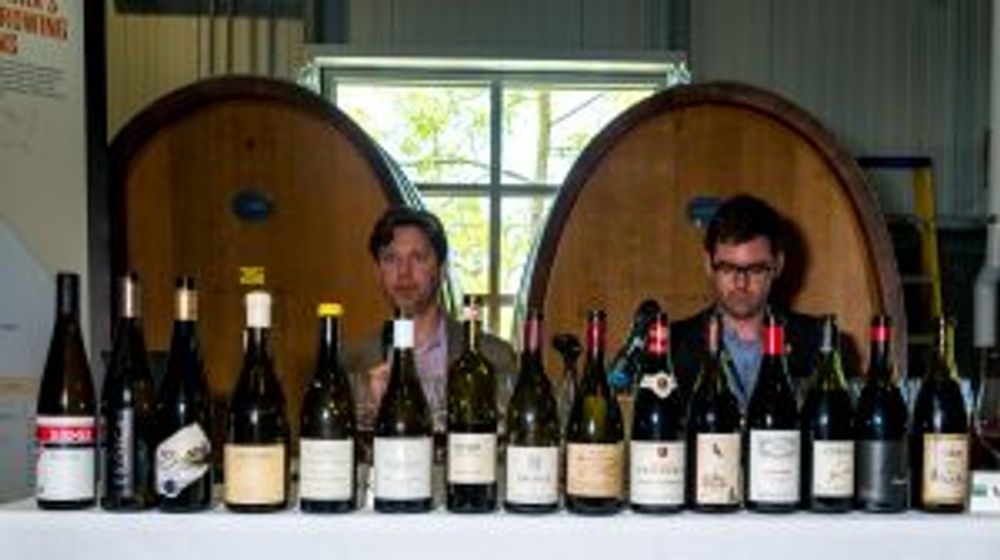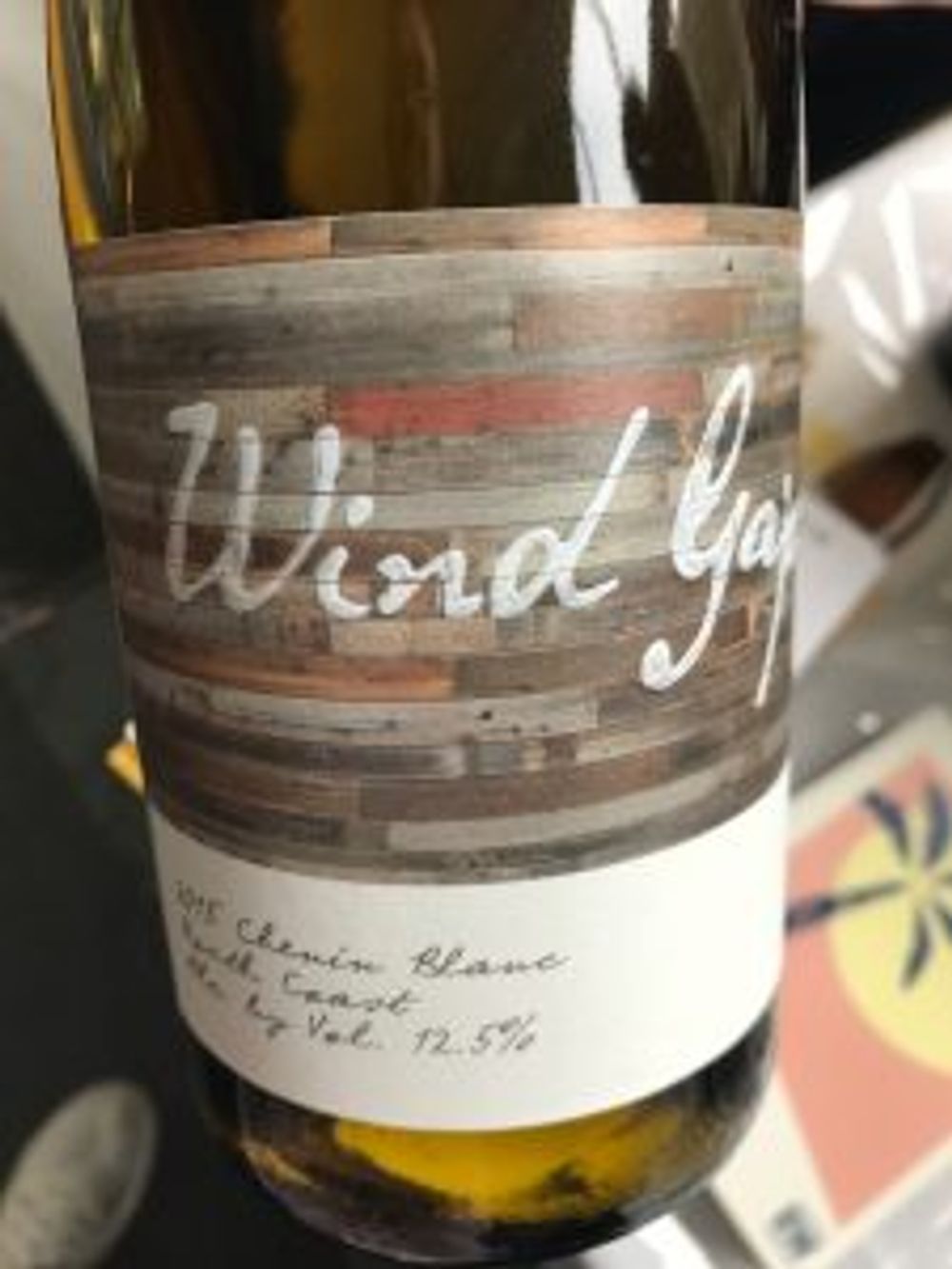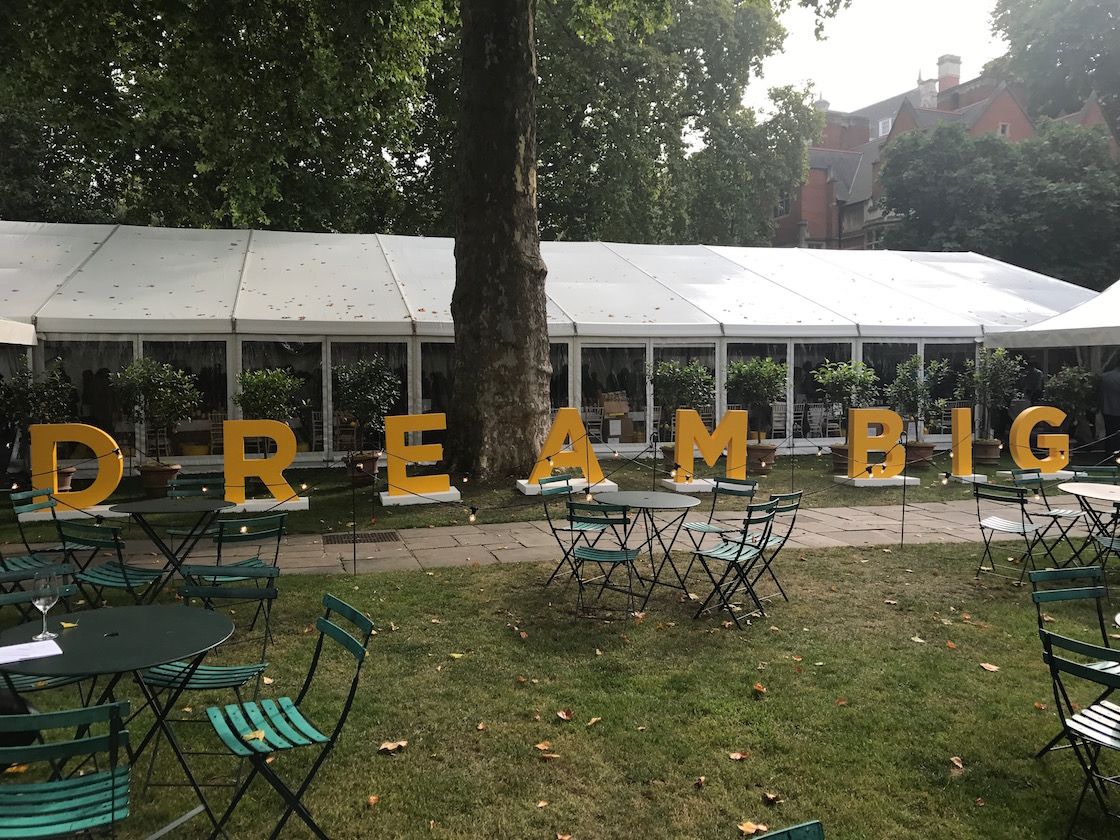With the drought years behind them and a new marketing set-up in the UK, there has been plenty for the California Wine Institute and Californian winemakers to shout about.
Readers may well be scratching their heads as to why The Buyer has been featuring content on Californian wine on an almost weekly basis. How come we have been posting so much content about California recently?
The answer is twofold. The first is operational. The Californian Wine Institute closed their London office and invested that budget into a more PR and marketing-focused, global programme of events – which includes taking journalists to California and showing them first hand what the current state of play is in America’s Golden State.

Old World meets New World, waiting for one of the two seminars
The second answer is that Californian wine has changed immeasurably over the past 10 years. The judgement that Californian wine is “over-concentrated, over-priced and over here,” is out of step with the growing diversity in regional and winemaker styles at work there.
On a visit in May of this year I, like many of other writers and sommeliers on a trip called the California Wine Summit, were genuinely surprised by how much winemaking had changed there. It was as though a large proportion of winemakers had really taken on board the principles of In Pursuit of Balance and it had either taken hold or greatly influenced the way they were making wine.
As one winemaker who had always managed to temper the ripeness in her wines put it “When everyone started making Robert Parker wines, we somehow missed that memo.”
The impressive attendance at today’s California Wine Fair will have discovered the same thing – that this is genuinely one of the most exciting and dynamic wine regions producing wine today. The Syrah and Pinot Noir on the coast, the crunchy, bright Chardonnays of Sonoma and Santa Barbara, the Zinfandels, even, that have terrific tension and a backbone of acidity – many of these wines are challenging people’s preconceptions.

Sure, you cannot disguise the fact that California has a lot of sun and there is often ripeness and concentration to handle, but when they are – through a variety of topographic or viticultural factors – the wines can be best in class.
Blind-tasting has always been the defining model
It was fitting and predictable even that, of the various seminars and workshops that the Californian Wine Institute put on in May at the California Wine Summit, two were blind-tastings.
Californian wine was and always will be defined by the Judgment of Paris in 1976*, and you can see similar things currently happening in neglected wine regions or those, like Chile, that have changed the way they do things and have a point to prove – The Judgment of Berlin, for example, and The Semillón Sessions: A New Chile.

Karen MacNeil leads a completely blind tasting, Sonoma Coast, May 2017
In California the blind tastings had a similar background, the first one being MCd by Karen MacNeil, author of the best-selling Wine Bible. The tasting was genuinely blind in the sense that we were blindfolded, while we were led by Henry ‘Hoby’ Wedler, a UC Davis doctoral student in chemistry, who is blind.
This workshop was about extending our own field of reference – Hoby could detect daffodil and turmeric in phenolics (waddya know? they were there) – and also throwing in a few wines that the assembled throng may not have known or may have guessed were from anywhere but California.
Closer to the Judgment of Paris event was the other blind-tasting workshop called A Matter of Style – California Wines in a Global Context, which had two of America’s top master sommeliers, Geoff Kruth MS and Matt Stamp MS, challenge a group of 30 of us to see if we could spot which wine was Californian, when tasted alongside other world-class wines.

Geoff Kruth MS and Matt Stamp MS lead a more Judgment of Paris-style tasting, Sonoma, May 2017
There were 15 wines in all – five flights of three – and we were asked to compare and contrast the styles of the Riesling, Chardonnay, Cabernet Franc, Pinot Noir and Syrah which had been selected from classic Old World, New World and Californian wine producers.
I love blind tasting because, more than any other discipline, it gets you to focus entirely on what is in the glass. It is also blindingly difficult. Even though our master sommeliers had picked the wines (but didn’t know in which order they were going to be served in) they did get some wrong.
There isn’t enough space or time to go into all of the detail behind the tasting, suffice to say that some people preferred different wines from one another – wine appreciation is a matter of taste, after all, and not just a matter of style. So, with the three Syrah wines, for example, most people preferred the Californian Wind Gap from the Sonoma Coast over the classic, young Cornas.
The other observation was that it was never obvious which wines were Californian, from Old World wine producers nor indeed from other New World wine estates, which proved the point Kruth and Stamp were trying to make – that Californian wine can sit quite happily on the world stage and rub shoulders with the very best.
If there was a note of defensive pride about this exercise, then there needs to be, for all the reasons already given.

Wind Gap’s new labelling displayed at the California Wine Fair
It is true that, following the Judgment of Paris many Californian wineries started chasing critic scores and big flavour concentration in their wines more than balance and freshness. This has changed and those ‘icon’ producers have been joined by a new breed of winemaker, like the ones chosen by Kruth and Stamp – Tatomer, Ryme, Sanford & Benedict, Ceritas and Wind Gap – who are more interested in making wines that have higher acidity, a greater expression of terroir and more moderate alcohol levels.
The evidence was there for all to see, and taste, and not just in the Matter of Style blind tasting.
Throughout the California Wines Summit and at the London California Wine Fair it was clear that there is huge diversity in regional and winemaker styles at work in the Golden State, and there is world class quality. In fact, I would venture to say that there has never been a better time to drink Californian wine.
*The Judgment of Paris tasting in 1976, effectively put California wine on the map. This was where some of the world’s top wine critics picked Californian Chardonnay and Cabernet Sauvignon as best in class, when blind-tasted against classic French wines.
































